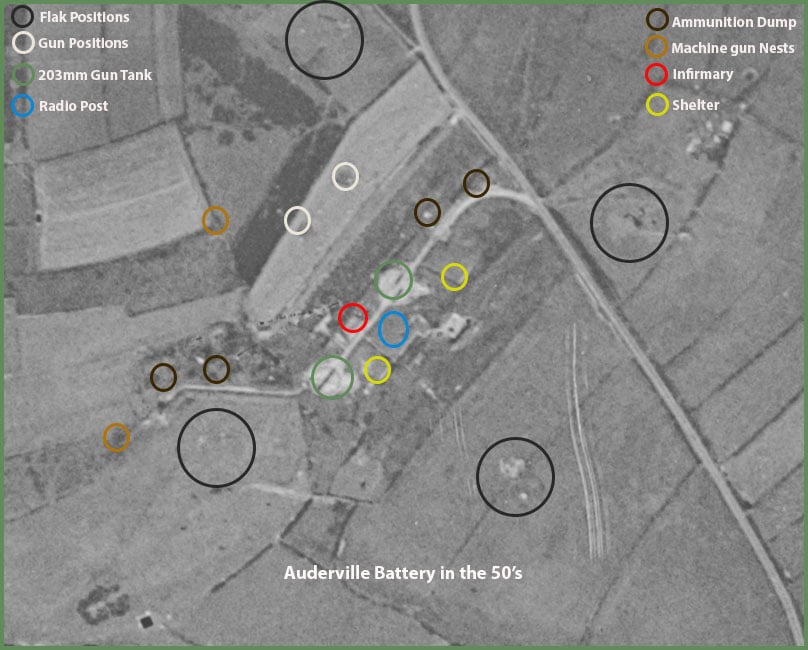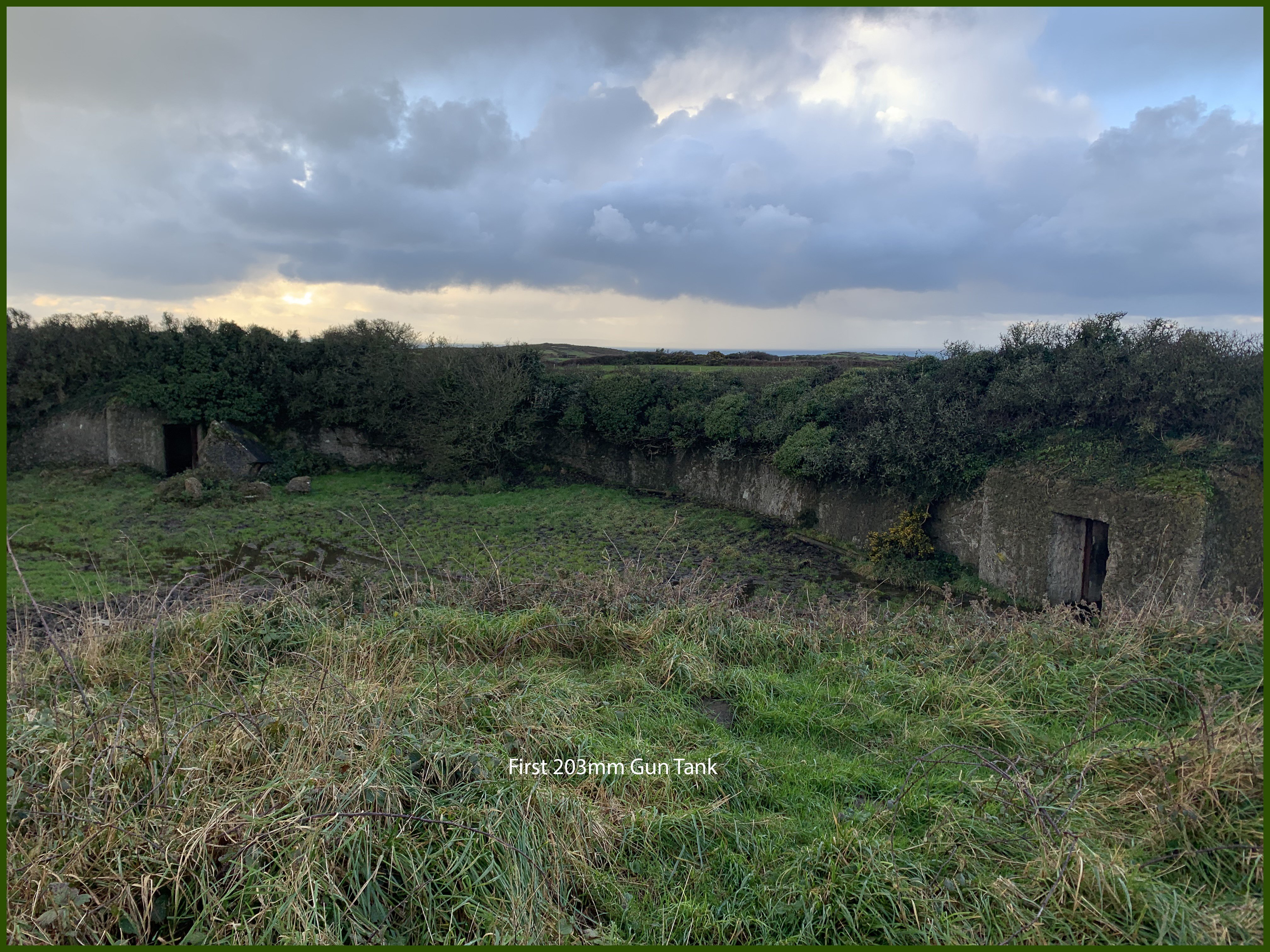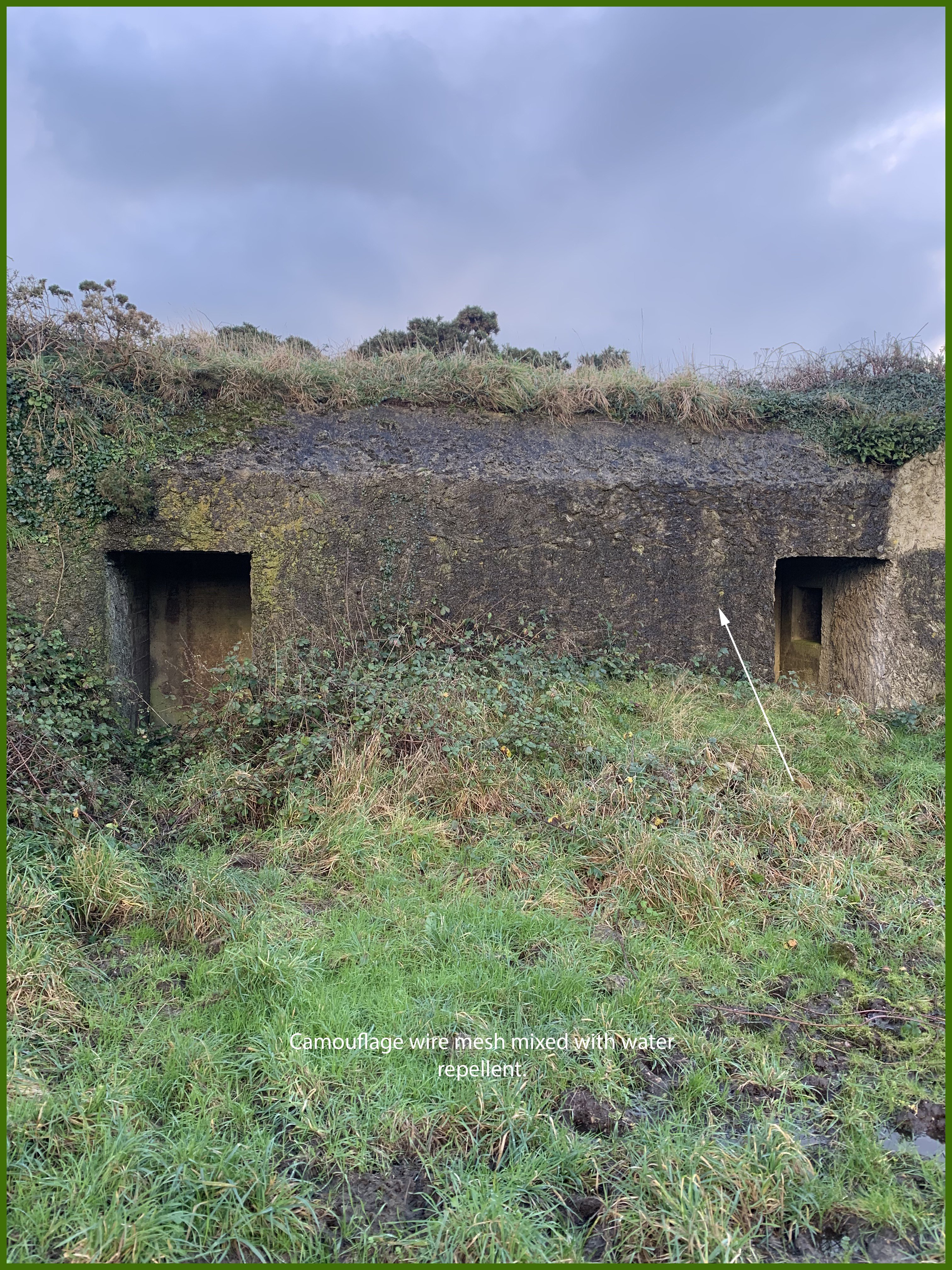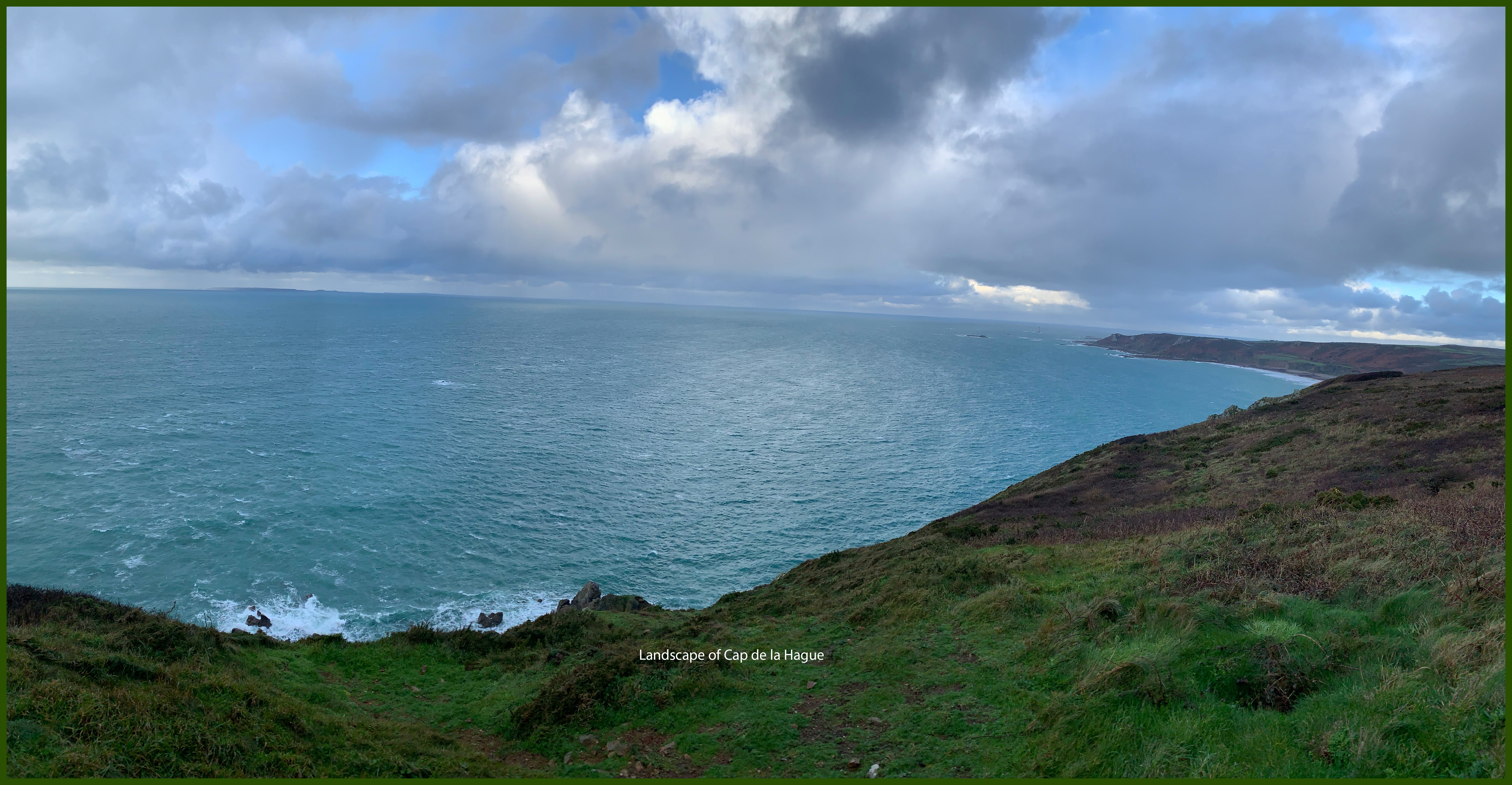
The Atlantic wall imagined by Adolf Hitler was a series of strongpoints some larger and more armed than others and stretched from Norway all along the coast passing through the Netherlands, Belgium, France all the way to the border with Spain. Its construction began in 1942 and all inhabitants of the coast started to see concrete edifices grow up as mushrooms. What used to be quiet and nice places became in just a couple of months, well-protected military emplacements.
Railroad Battery of Auderville La Haye
The German battery of Auderville La Haye codenamed WN 365 is located at the West of the city of Cherbourg, precisely at the Cap de la Hague, 1.24 miles south of the village of Auderville. It was given the mission to defend the passage between Alderney Island and the continent (18 km).
Todt Organization was the company of the Third Reich in charge of building all Nazi constructions. When the Audervillais (people living in Auderville) started to see their landscape change, they saw workers from local masonry companies working there rapidly joined by political opponents.
Three Work Camps were created. One at Auderville, precisely in the Hamlet of Laye (D-401) codenamed “Walter Flex” which could welcome 588 workers, “Dixmude” camp at Équeurdreville-Hainneville (850 workers) and the last at Gréville-Hague with a capacity of 77 workers).
“Walter Flex” was made of around 20 wood shacks, block buildings and one infirmary. Locals and farmers were ordered by Germans to clean up latrines. Prisoners were from North Africa, from France, from Russia and many other nationalities; prisoners of war of the Third Reich on the Eastern front.
Built in 1943 by approximately 1200 workers whom worked against their will, the battery was composed of two 203 mm guns which were able to fire, 22 miles range. Its particularity? Its guns. They could turn at 360 degree!
Back in time, the guns were to be assigned to the SMS Lützow and SMS Seydlitz but they never received them. Why? The SMS Lützow was sold to the Soviet Union and renamed Petropavlovsk by the Russian Navy. The beginning of the Second World War forced the construction of the SMS Seydlitz to stop. It was during the summer of 1940 that the project will be completely stopped.
The 203 mm guns were heavy, building a railroad just to transport them was too expensive, it was decided to bring them by road. How so? Guns were loaded on mobile platform with wheels and transported from Barneville-Carteret to Auderville by powerful trucks. To set up the guns easily and rapidly, Germans installed rail tracks from the battery’s entrance until their final emplacement, built in a circle to provide a fire at a range of 360 degree.
A locomotive could have been used to drag the guns, but none was in the vicinity at the time, men had only their muscles to set them up!
The battery was defended by 4 antiaircraft guns. (See thereafter Auderville’s Battery map). Machine gun nests were dug in to create a supporting fire but the main support was from the WN 354 located at the West of the battery.
In all, 82 German soldiers were in charge of the battery, without counting the outposts, which were dug in the vicinity. Germans had also dug in a tunnel to reach the other battery on the coast.

Walking inside the Battery
To find your way, as the landscape has changed due to the vegetation, imagine the rail tracks which the Germans built to transport the guns. It is not difficult to imagine them because they were running from East to West. (from the road to the last gun emplacement).
When you find yourself at the entrance of the Battery you can easily see two bunkers on your right. These bunkers were ammunition dumps, after 76 years nature has resumed its rights but if you are brave you can easily go inside. Unfortunately, the other one is completely flooded during winter. If you continue on your way on the rail tracks, there is one barrack bunker on the left but its entrance is blocked by mud, grass and rocks. Then you will find yourself between two large walls built in arc, indeed it is the first gun emplacement also called a gun tank.

Gun tanks received rail tracks built in circle so they could fire in any direction. (Both guns were camouflaged thanks to a camouflage netting). One thing that surprised us, something we have never seen before.
First we thought it was the vegetation but after some research we found our answer.
Cap de la Hague is a county where humidity is very high so to keep heat high inside the concrete buildings, the Germans decided to insulate them with camouflage wire mesh mixed with water repellent.

On our way to the second gun emplacement, we passed next to the infirmary which was on our right. (If you turned your back to the infirmary, you could see two large bunkers, the radio central bunker and another barrack bunker.) The second gun emplacement will be straight ahead of you with other ammunition dumps.
Assault the Battery
The battery was bombed regularly from April until the seizing of the Cap by the 9th Infantry Division. When the three American Divisions (4th, 9th and 79th Infantry Divisions) started to march toward Cherbourg, all batteries around Cherbourg started to fire as the battery of Auderville.
On the 29th of June 1944, the 60th Infantry Regiment of the 9th Infantry Division arrived at Beaumont-Hague, it received artillery fire from the Auderville’s battery. Some of the men found shelter in houses, buildings, then all troops less the 2nd Platoon of “E” Company left for Jobourg, the last stand before Auderville Battery.
Normandy American Heroes Blogs we recommend you read!
THE NEZ OF JOBOURG, ONE OF THE HIGHEST CLIFFS OF EUROPE AT 128 METERS
PUSHING TO THE EDGE OF THE CLIFFS OF THE HAGUE PENINSULA, LAND’S END
_%20Des%20civils%20sur%20le%20canon%20de%2020%2c3%20cm%20K(E)%20No_%20919177-May-12-2021-08-28-26-23-PM.jpg?width=770&name=Auderville%20(Manche)_%20Des%20civils%20sur%20le%20canon%20de%2020%2c3%20cm%20K(E)%20No_%20919177-May-12-2021-08-28-26-23-PM.jpg)
Auderville Battery and Cap de la Hague Nowadays

After the war, French Navy decided to fixe one gun while the other would be used to replace the former guns of Ré and Groix Islands.
Nowadays Cap de la Hague is nicknamed by the French people as the “Wild Coast” but back in 1940 this piece of land was nicknamed “Radar Zone” as it was there that was situated the biggest German radar concentration of the Third Reich!
%20(1)-May-12-2021-08-28-27-11-PM.png?width=804&name=Capture%20(2)%20(1)-May-12-2021-08-28-27-11-PM.png)
The landscape around the battery has changed over the last 76 years, grass has grown, land had healed itself, soldiers from both camps no longer with us…… but not forgotten.
Written by Pierre Fallet, WWII Trainee of Normandy American Heroes

















